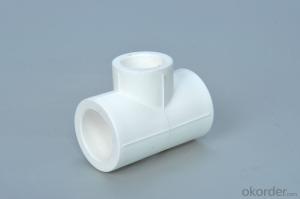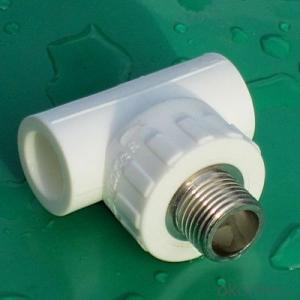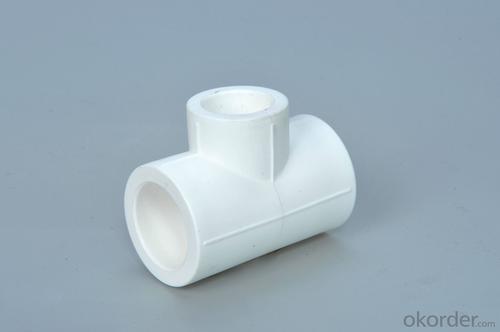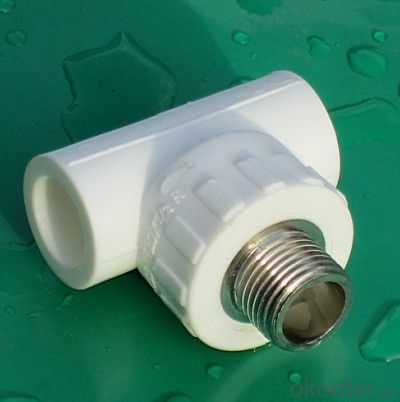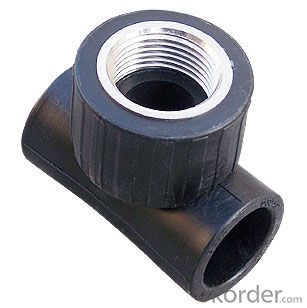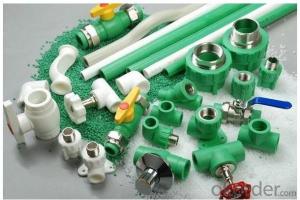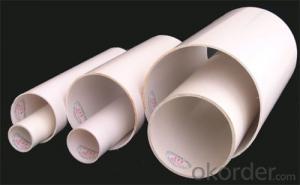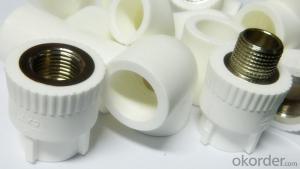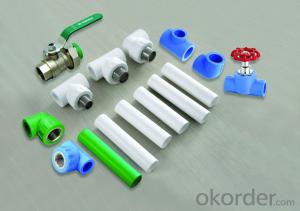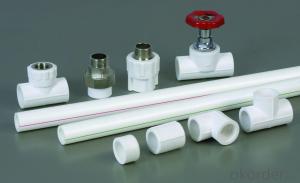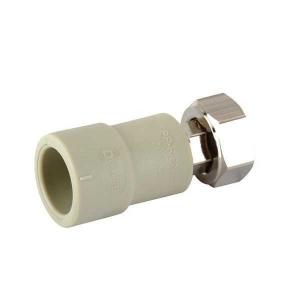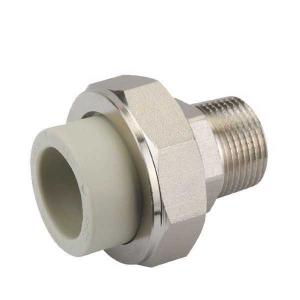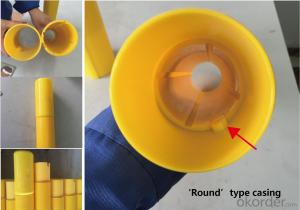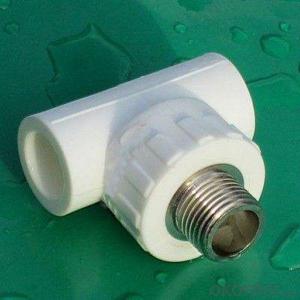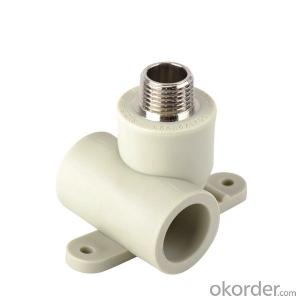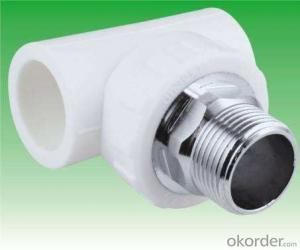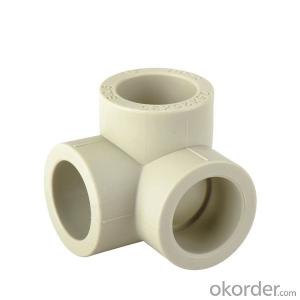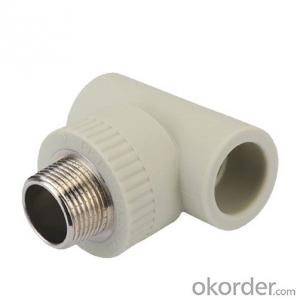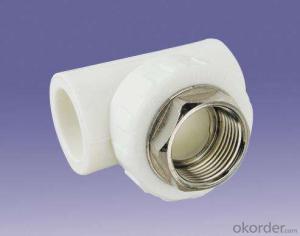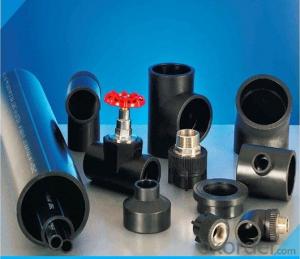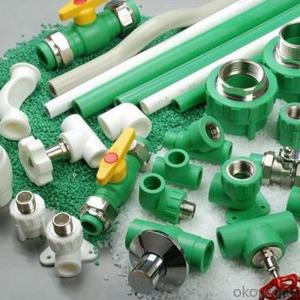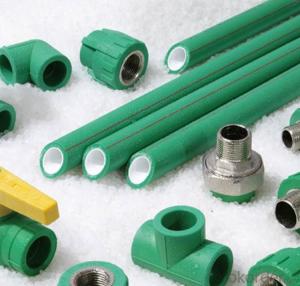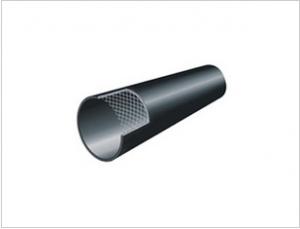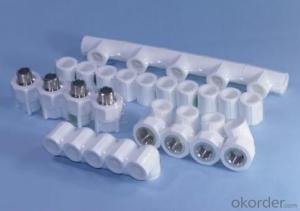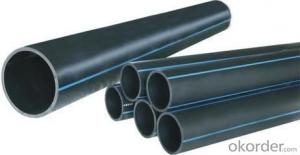40mm PPR Female Threaded Tee Plastic Pipe Fittings Made in China
- Loading Port:
- Ningbo
- Payment Terms:
- TT OR LC
- Min Order Qty:
- 1000 pc
- Supply Capability:
- 100000 pc/month
OKorder Service Pledge
OKorder Financial Service
You Might Also Like
Product Overview
Standard: ISO
Color: many colors
Product name: Plastic Pipe
Application: house and garden
Usage: Family Decoration Industry
Certification: ISO Certificate
Feature: Lightweight
Size: Customized Size
Type: Round Pipe
Name: HDPE Plastic Pipe
Application
1. Cold and hot water pipe system.
2. Potable drinking water system.
3. Air conditioning pipeline system.
4. Chemical industry pipelines system.
5. Indoor heating system, high temperature radiator heating system
Product Description
Product name | Size | Weight | Pack |
Equal tee | (Gram/m) | (m/pack) | |
T16 | 12.5 | 1300 | |
T20 | 19.4 | 800 | |
T25 | 30.5 | 450 | |
T32 | 48.2 | 260 | |
T40 | 90.8 | 150 | |
T50 | 142.5 | 106 | |
T63 | 275.3 | 54 | |
T75 | 515.0 | 30 | |
T90 | 712.0 | 18 | |
T110 | 1082.0 | 12 | |
T125 | 1544.0 | 8 | |
T160 | 2531.0 | 4 |
Main Product Features:
Large drum hub to maximize cable life
Self-activating automatic brake hold the load securely when crank handle is released
With cable or strap
Safety guard cover available
Top quality with competitive price
Widely used in the double beam bridge crane and gantry crane
Easy to install and high quality
Compact structure and reasonable design
Could be mounted on t he ground or wall!
Double drum!!
FAQ
Q1: How Can I Get A Sample?
A1: You can get samples by communicate with our export sales.
Q2: How Long Is Delivery?
A2: Delivery time will be30-45days according to order quantity.
Q3: What Is The MOQ?
A3: MOQ depends on different items.
Q4: What Is Our Normal Payments Terms?
A4: Our normal payment terms now is: T/T, L/C or western union, pay
- Q: Are plastic pipe fittings resistant to seawater and saltwater?
- Yes, plastic pipe fittings are generally resistant to both seawater and saltwater. They are often made from materials like PVC (polyvinyl chloride) or CPVC (chlorinated polyvinyl chloride), which have excellent corrosion resistance properties and can withstand prolonged exposure to seawater without any significant degradation.
- Q: Are plastic pipe fittings suitable for pneumatic conveying systems?
- Yes, plastic pipe fittings can be suitable for pneumatic conveying systems. Plastic fittings offer several advantages such as corrosion resistance, lightweight, and ease of installation. However, it is important to select the appropriate type of plastic material that can withstand the pressure, temperature, and abrasive nature of the conveyed material. Consulting with experts and considering the specific requirements of the pneumatic conveying system is crucial in ensuring the suitability of plastic pipe fittings.
- Q: Are plastic pipe fittings resistant to solvents and chemicals?
- Yes, plastic pipe fittings are generally resistant to solvents and chemicals.
- Q: Can plastic pipe fittings be used for wastewater systems?
- Yes, plastic pipe fittings can be used for wastewater systems. Plastic fittings, such as PVC or ABS, are commonly used in wastewater systems due to their durability, corrosion resistance, and ease of installation. They are able to handle the demands of wastewater flow and are designed to provide a secure and leak-free connection.
- Q: How do you connect plastic pipe fittings to ABS pipes?
- To connect plastic pipe fittings to ABS pipes, you will need to use a specific type of transition cement designed for joining ABS to other types of plastic. First, ensure both the fitting and the ABS pipe are clean and free of any dirt or debris. Apply a generous layer of the transition cement to both the fitting and the pipe, making sure to cover the entire surface area. Then, quickly and firmly push the fitting onto the ABS pipe and hold it in place for a few seconds to allow the cement to set. It's important to follow the manufacturer's instructions and safety precautions when working with cement and to allow sufficient time for the joint to fully cure before applying any pressure or using the system.
- Q: Can plastic pipe fittings be used in hydroponic systems?
- Yes, plastic pipe fittings can be used in hydroponic systems. They are commonly used due to their durability, resistance to corrosion, and affordability. Additionally, plastic fittings are available in a variety of sizes and configurations, making them suitable for different hydroponic setups.
- Q: Can plastic pipe fittings be used for landfill leachate collection?
- Yes, plastic pipe fittings can be used for landfill leachate collection. Plastic pipe fittings are commonly used in landfill leachate collection systems due to their durability, corrosion resistance, and flexibility. They are able to withstand the harsh conditions and corrosive nature of leachate, making them a suitable choice for this application.
- Q: Can plastic pipe fittings be used for waste disposal systems?
- Yes, plastic pipe fittings can be used for waste disposal systems. They are commonly used due to their durability, corrosion resistance, and ease of installation.
- Q: Do plastic pipe fittings meet building code requirements?
- Yes, plastic pipe fittings can meet building code requirements. However, it is important to ensure that the specific type and brand of plastic pipe fittings being used comply with the building codes and standards set by local authorities. Plumbing codes may vary in different regions, so it is essential to consult with local authorities or a licensed professional to ensure compliance with the building code requirements.
- Q: Do plastic pipe fittings have a maximum operating velocity?
- Yes, plastic pipe fittings do have a maximum operating velocity. The maximum operating velocity is determined by the specific type of plastic material used and the pressure rating of the fittings. It is important to follow the manufacturer's guidelines and recommendations to ensure the safe and efficient operation of the plastic pipe fittings.
Send your message to us
40mm PPR Female Threaded Tee Plastic Pipe Fittings Made in China
- Loading Port:
- Ningbo
- Payment Terms:
- TT OR LC
- Min Order Qty:
- 1000 pc
- Supply Capability:
- 100000 pc/month
OKorder Service Pledge
OKorder Financial Service
Similar products
Hot products
Hot Searches
Related keywords
